David Bailey, SCA Interpretive Ranger
It’s the end of a long day spent hiking at any of our wonderful New Hampshire State Parks. You’re winding down and fixed a well-deserved dinner. The sun is going down and so is the temperature, but you’re not ready to go to bed for the evening. That leaves you with one final task for the day, creating a campfire!
As one of the Interpretive Rangers at Francona Notch State Park this summer, one of my favorite programs I teach is “Campfire 101”. This program is made to teach beginner campers how to build a campfire from scratch and to not have to rely on fire starting logs. It warms my heart to see people learn this skill at the Lafayette Campground amphitheater and to see them bring it to their campsite. For those of you that won’t be able to make it to my programs, I decided to put a version of my lesson on this blog.
Basics
The first step is to see if you even have permission to start a campfire. Sometimes an area does not allow fires due to dry conditions and high winds. Other times it may be because of ecological regions, such as the habitat above tree line, known as the alpine zone. These regulations, along with other relevant information you may need to know about an area, can usually be found on their websites, or at the local Forest Service website for the area. For all NH State Park camping and day use guidelines, please check out the website. As for fires, all NH State Parks have the following guidelines:
- All campgrounds fires are subject to fire restrictions.
- All permitted camping fires must be contained within the fire ring. Firewood must fit into the provided fire ring and be less than 5 inches in diameter.
- Firewood is a major carrier of exotic insects and tree diseases. Do not bring firewood from out of state locations.
- Cutting standing trees, shrubs are prohibited. Using power saws is prohibited.
- Burning trash is illegal and fineable through the local fire department.
If the area does allow for campfires, we need to remember the Leave No Trace (LNT) principals. LNT is a set of ethics and principals that promote the outdoor conservation and how to best minimalize our impact. Let’s take a look at LNT principal number five, Minimize Fire Impacts. First, think if a fire is necessary or safe for you to make. Will you be using this fire to warm yourself and/or cook food, or will it be started and then not used? If the fire is going to serve a use, then start it. Otherwise, maybe think twice before wasting fire materials. When making the fire, make sure the flames are kept to a reasonable and manageable size. Also only build fires in the provided fire rings at the location you are staying.
Tools Needed
Hatchet- Having a hatchet or an axe will be very helpful when using this method. This will let you easily split wood.
Matches, lighter or flint and steel
Fire Poker- Used to move logs and coals in the fire. Can be metal or just a long, sturdy stick.
Water Bucket- used to extinguish the fire at the end of the night or in an emergency.
Firewood
To have a fire we of course will need wood. It is very important that when you purchase wood for your campfires, that you burn it where you buy it! Transporting wood from other places, even within our own sate, has a risk of transporting invasive and parasitic bugs that could infect and damage trees. You can purchase wood for fires at the NH State Park campground stores. For more information, check out the “Don’t Move Firewood” website and learn about more you can do to protect NH trees and forests.
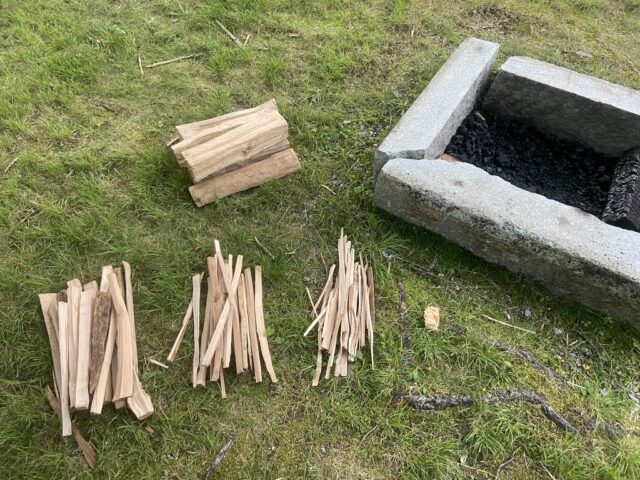
To start our fire, we will need three types of fuel. Tinder, kindling and firewood.
Tinder- a very fast burning fuel that catch’s a flame easily. Used to start the kindling. This can be made of paper, leaves or premade wood shavings from a store.
Kindling- a series of thicker pieces of wood that will burn longer than the tinder. Used to start the firewood.
Firewood- the wood used to keep the fire going and provide warmth.
When I get a bundle of wood, I like to take a few pieces and begin to split them. This is what I will make my kindling with. I like to split them into three sizes, thin shavings, about 1/2 inch thick and 1-inch-thick pieces. I find that this makes for an easy way to feed fuel into the fire as it is starting.
Forming the Fire
There are several ways of stacking the wood but my favorite method is the log cabin. I start by placing two pieces of firewood perpendicular to me and the two pieces stacked on top horizontally. Make sure the hole in the center is about five inches wide. This will promote air flow and will give us a place to put our kindling. Start by making a loose cone shape in the center with the ½ inch thick pieces.
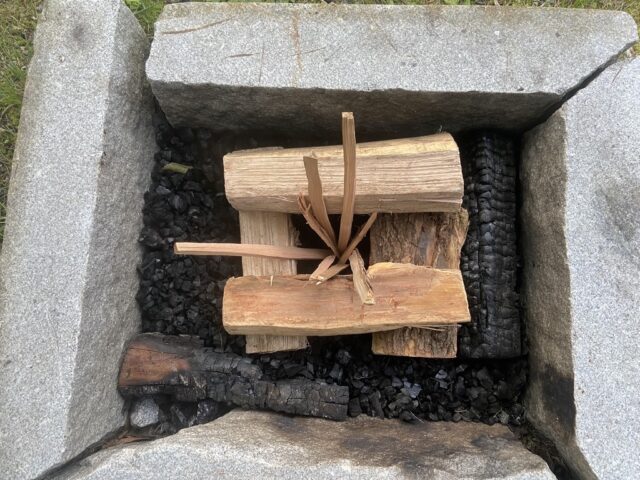
Then add the thin shavings and tinder that will ignite the bigger kindling.
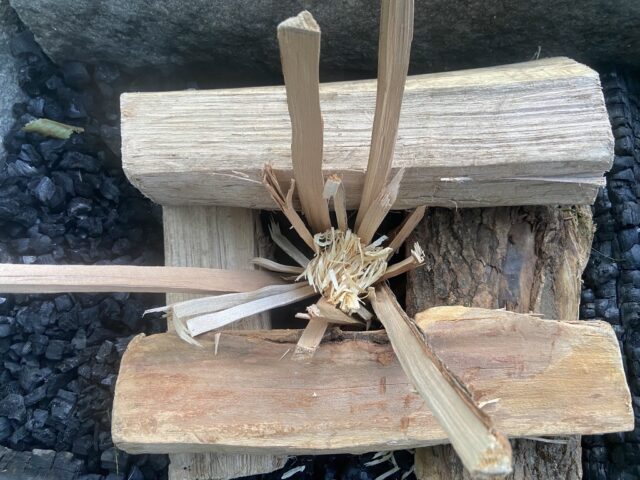
Starting the Fire
Now it’s time to start the tinder. You can use a lighter, match or flint and steel. After the tinder is lit let it start catching the surrounding wood on fire. Occasionally add the thin wood shavings to help the fire grow but be careful not to smother the flames.
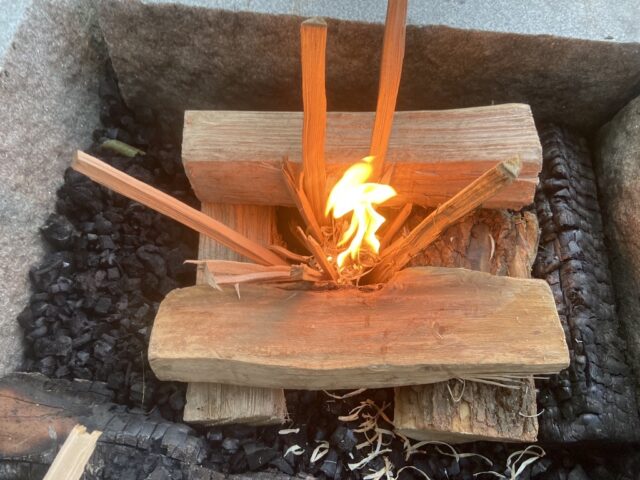
After you get a good fire going, add the one-inch kindling across the top. This will help get the larger firewood started. After a few minutes, everything should be burning. Now, for the remainder of the evening, add wood as needed.

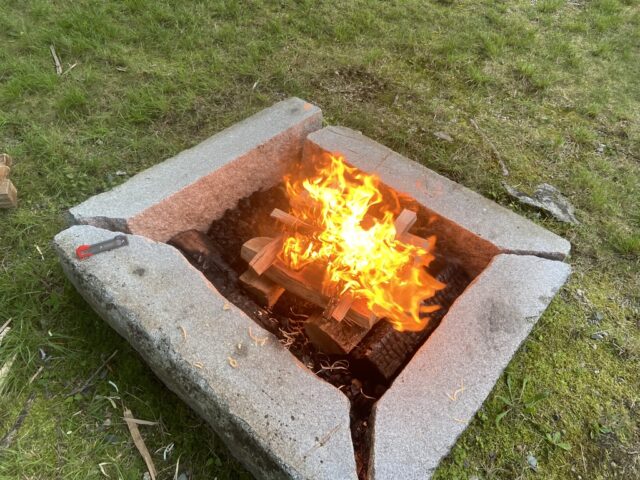
Extinguishing the Fire
At the end of the night, you will need to extinguish your fire. The reason for this is to prevent any unwanted fires from starting and for general campsite safety. Before extinguishing the fire, it is best to let the fire burn down to just coals. This makes the fire easier to extinguish and clean up.
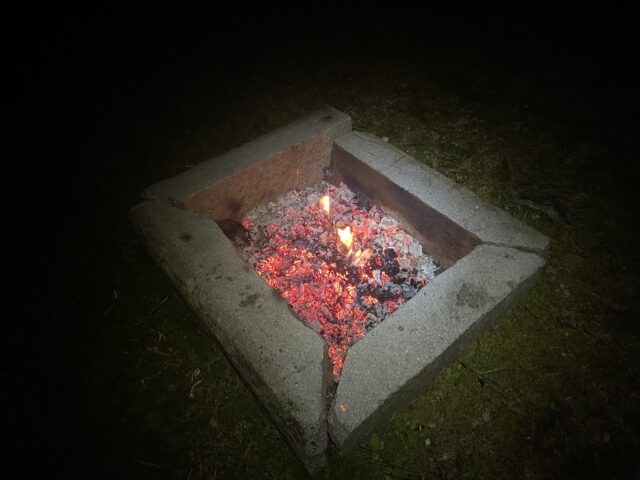
When it comes time to officially put the fire out take a bucket of water and SLOWLY pour the water onto the coals. Be careful of the steam! After the first bucket, make sure to take a stick and stir the coals around before pouring the next. This will make sure all the coals have been extinguished. The fire is safe when you can hold your hand above the coals and feel no heat. It is now safe to go to bed so you can rest up for another day of adventuring.
Please remember to check the fire danger status of your area before starting a fire! Minimize your environmental impact while creating a fire, and be mindful of how much fire material you need. And, most importantly of all, remember to FULLY extinguish your fires before you leave your site. Remember, “Only YOU can prevent forest fires!” (Smokey the Bear).
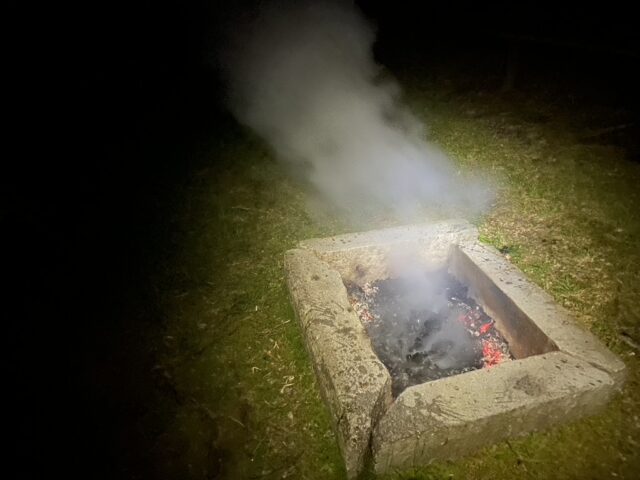
The post Campfire 101 appeared first on NH State Parks.
